ENERGY TRANSFORMATION
Overview
It’s easy, and understandable, to read a phrase like “energy transformation” and equate it with “solar panels,” “wind power” or “renewable energy.” Those delivery systems and concepts are certainly crucial components of energy transformation. However, they are pieces in the larger puzzle of America’s energy future.
What is energy transformation?
Put simply, energy transformation is the means through which our everyday use of alternative energy systems and energy-efficient technologies will increase, while also introducing new opportunities to help sustain America’s electric grid for generations to come.
Use this section to learn about our electric grid, the challenges it faces, and the opportunities new and emerging technologies offer.
SAFE, AFFORDABLE AND RELIABLE
The grid is a modern marvel
In the history of manmade accomplishments, America’s electric grid remains a marvel of modern design — nearly 10,000 generation plants generating a total capacity of a million megawatts along more than 600,000 miles of transmission lines across the country.
America’s electric grid is safe, affordable and reliable, and it has sustained our nation’s needs for a long time. However, that grid must evolve to accommodate historic energy demands that will only continue to increase, as well as consistent growth, weather uncertainty, and emerging technologies.
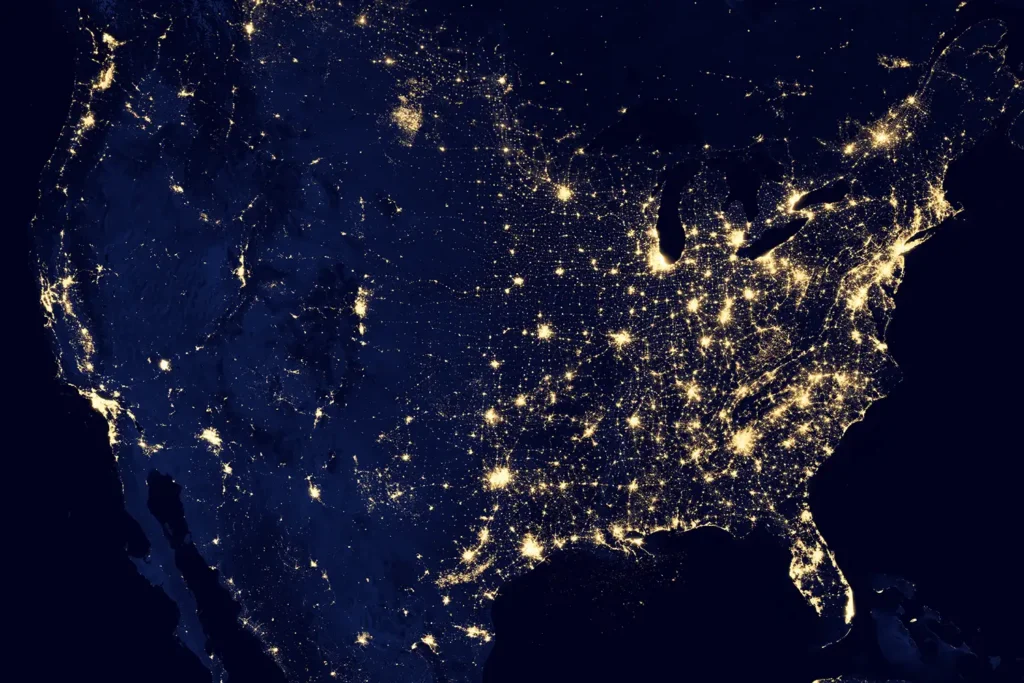
At its core, this evolution of our nation’s grid defines energy transformation.
It will include upgrades to infrastructure, advanced systems for metering and monitoring, and smart-grid technology to enhance flexibility, resilience and efficiency. Most of all, it will require an embrace of reliable alternative energy sources — to both reshape the ways in which we use energy and expand power availability in the larger utility market.
When will energy transformation take place? We’re already in the middle of it, it’s always happening, and it will not suddenly conclude overnight. What is the game-changer for energy transformation? It’s easier to say the most effective outcome is a convergence of multiple transitions.
In essence, energy transformation represents the means through which our everyday use of alternative energy systems and energy-efficient technologies will increase, while also introducing new opportunities to help sustain America’s electric grid for generations to come.
Grid 101
Power arrives in your community through a complex infrastructural network of transmission lines, substations, distribution lines, transformers and control systems. America’s electric grid boasts nearly 10,000 generation plants sending a million megawatts of generating capacity across more than 600,000 miles of transmission lines.
Every step of the way, experienced professionals monitor and manage this flow of electricity. They maintain energy supply and stability, forecast future operations and address equipment failures, extreme weather events or other unanticipated interruptions.
This infrastructural integrity and individual expertise safely delivers electricity from power plants to Tipmont and, later, your homes, businesses, schools and communities.
With 120 employees and 2,855 miles of electric line across 875 square miles of service territory in eight Indiana counties, Tipmont serves 25,390 members and a total of 29,458 meters.
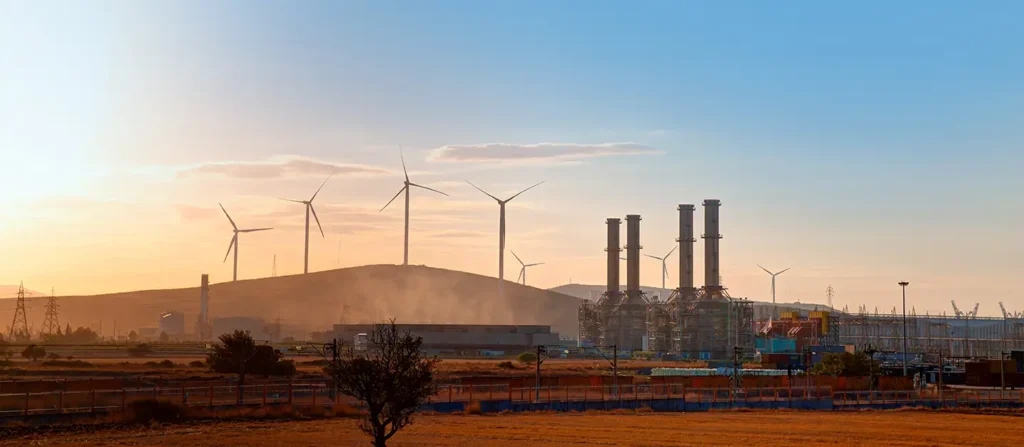
Power generation
Power plants generate electricity using various sources, including fossil fuels (e.g., coal, oil, natural gas), nuclear energy, renewable sources (e.g., solar, wind, hydroelectric, geothermal) and, in some cases, energy storage systems.
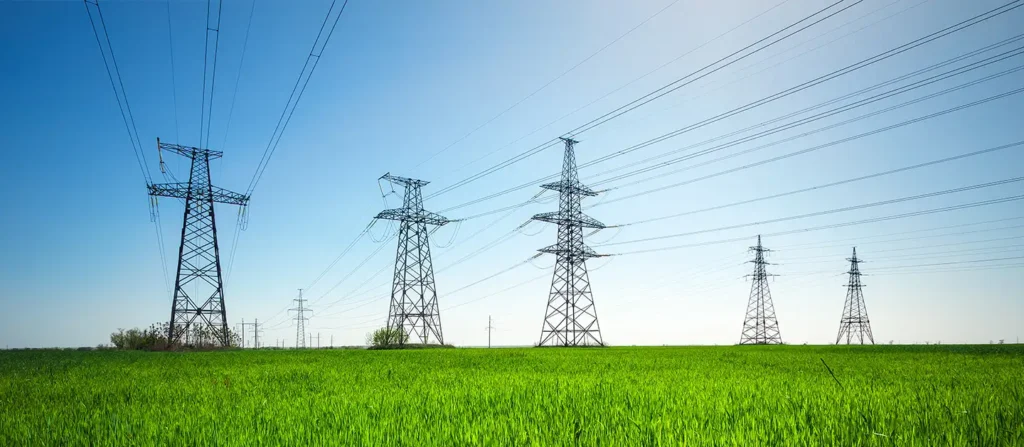
Transmission
This electricity then travels over transmission lines at high voltages over long distances. Grid operators — commonly known as Independent System Operators (ISOs) or Regional Transmission Organizations (RTOs) — maintain these lines to ensure reliable and efficient operation.
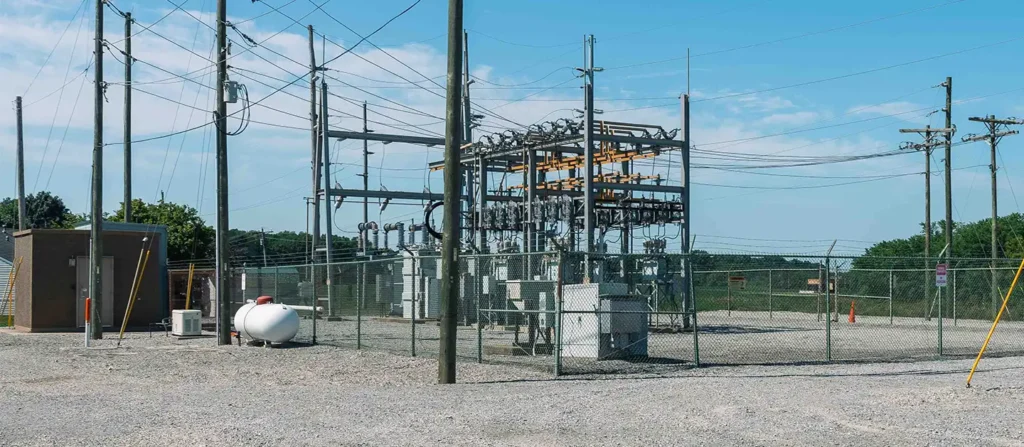
Distribution substations
Here’s where Tipmont’s infrastructure enters the equation. Transmission lines enter each of Tipmont’s 21 substations, where high voltage levels are regulated and decreased.
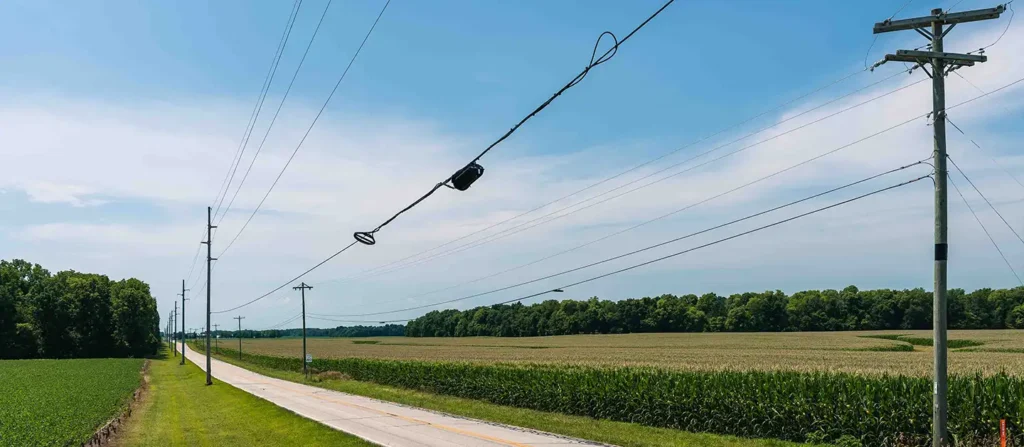
Distribution lines
From each substation, Tipmont distribution lines transmit electricity at safe voltage levels for use by Tipmont members. These distribution lines carry electricity directly to your homes, businesses and communities.

Tipmont members
This is you! After the electricity travels through a series of power lines and transformers to be measured using meters, you enjoy the security, comfort and convenience of Tipmont power.
How Tipmont buys energy
Today, Tipmont purchases the power it delivers to you from Wabash Valley Power Alliance. Because 95% of the electricity Tipmont delivers is residential in nature, we see a burst each morning as Tipmont members wake up to prepare for their day, and then a peak each evening when they have returned home and are using larger amounts of electricity.
When Tipmont buys power supply, the total cost accounts for three distinct charges:
- On-Peak Charge
This is the charge for electricity used from 2 to 8 p.m., when electricity usage is at its highest.
- Off-Peak Charge
This is the charge for electricity used from midnight to 2 p.m., when electricity usage is lower compared to peak times.
- Demand Charge*
This represents the total capacity Tipmont’s power supplier must meet at any given time.
* When demand increases — as on an extremely warm or cold day, or a holiday when more people are at home during the day — additional power sources must be found. This can be very expensive, sometimes doubling Tipmont’s monthly power supply bill. As such, it is in the best interests of Tipmont and its membership to find ways to lower that peak demand and, consequently, the demand charge.
WHERE POWER DELIVERY IS HEADED
The future of power delivery
For decades, the only option for Tipmont (or any other power provider) was finding ways to somehow use less energy or pay for more power supply.
Energy transformation offers new technologies and consumer options to help maintain the electric grid’s sustainability, resiliency and reliability.
Integrating more renewable energy sources — like solar, wind and hydroelectric power — into the grid can reduce greenhouse gas emissions and decrease reliance on fossil fuels.
However, these sources generate electricity in different ways than fossil fuels do. This means there must be adjustments to the maintenance, balance and infrastructure of our electric grid.
Renewable energy technologies are always evolving, and the cost to implement them continues to decline. This is driving a nationwide increase of renewable energy projects.
Although America’s electric grid is a wondrous feat, its age has started to show. Proactive steps to modernize the grid can maintain its performance and purpose for decades to come.
These include smart-grid technology, advanced metering systems and grid-scale energy storage solutions. All of these will help facilitate the introduction of renewable energy sources into the grid, like at-home solar panels, energy storage systems and electric vehicles.
Right now, energy delivery in America is predominantly a one-way street. Electricity originates at a power plant and travels in one direction to consumers.
Over time, that will shift closer to a two-way street. This means some consumers will generate their own power — which they could use themselves, store for use at a later time and / or return to the grid in exchange for incentives.
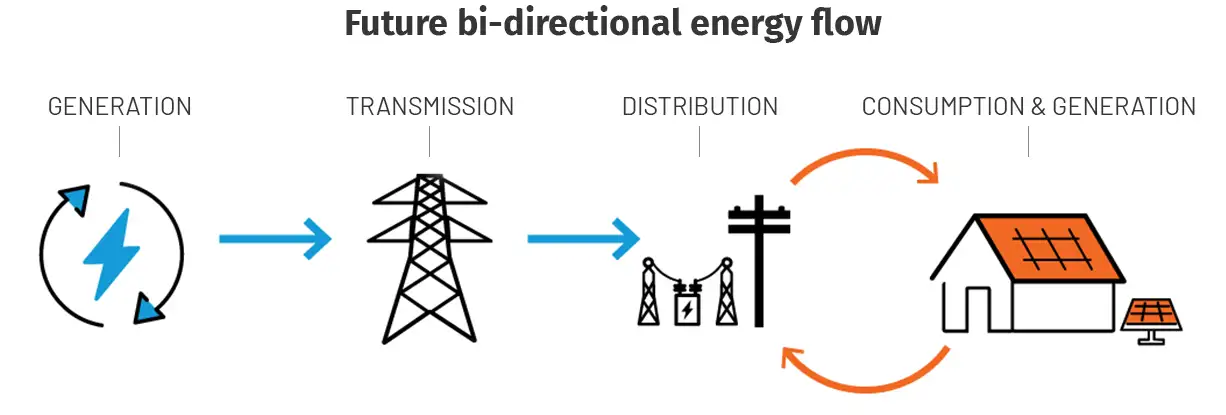
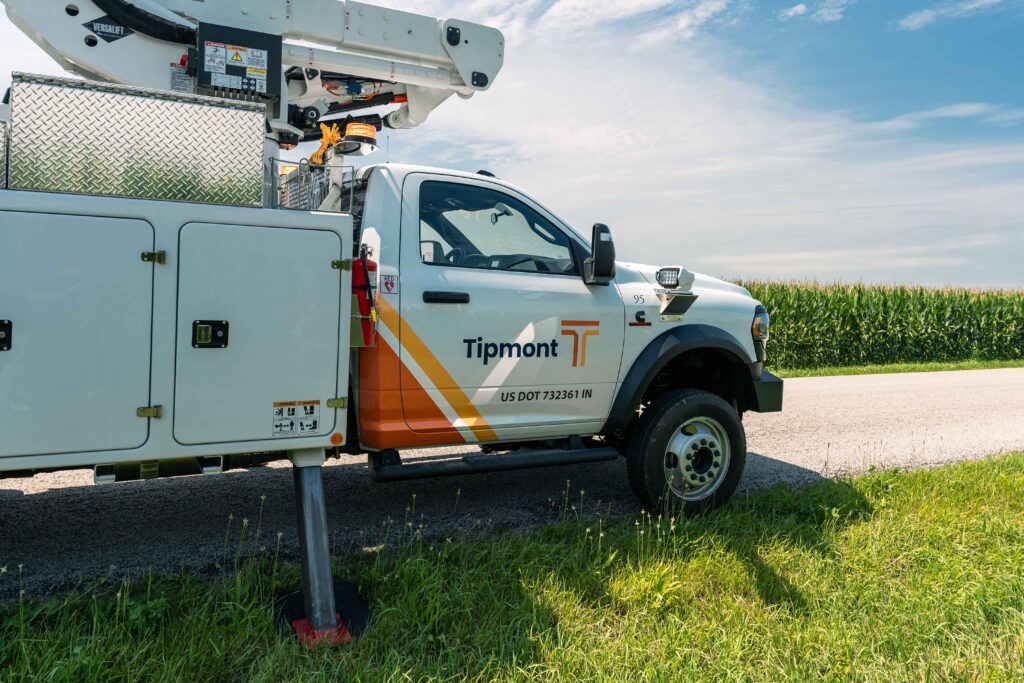
What does that mean for Tipmont?
We currently have 21 substations through which we collectively distribute power to more than 29,000 meters. If a Tipmont member generates electricity on their own, that power could move back onto Tipmont’s grid and become part of our total available power supply.
Why is this a good thing? It eases dependence on America’s electric grid, provides Tipmont with a manner to avoid peak demand charges, and can help stabilize energy costs.
Tipmont has anticipated an increase of bi-directional energy activities for many years, strategically discussing potential grid, program and incentive adjustments that may be offered over the coming decades.
What will American power delivery look like in 20 years? The specifics are not yet clear.
However, we can confidently say it will be increasingly driven by alternative energy sources that continue to meet users’ demands and are also cleaner, more resilient, digitally enhanced and consumer-generated.